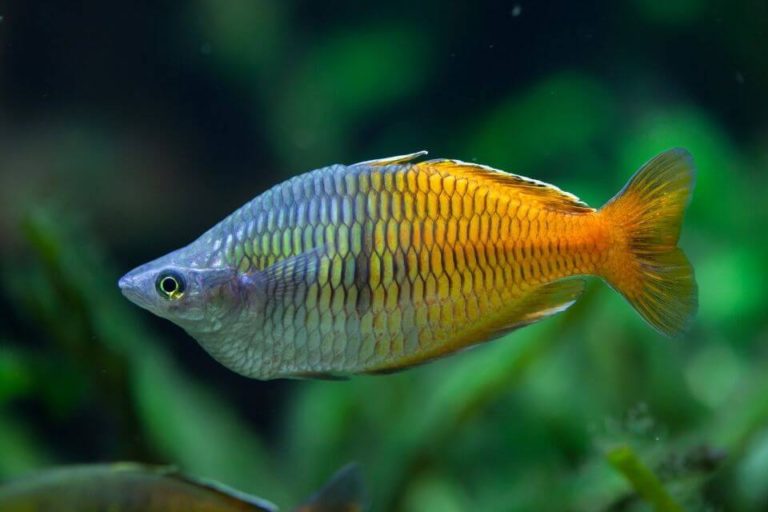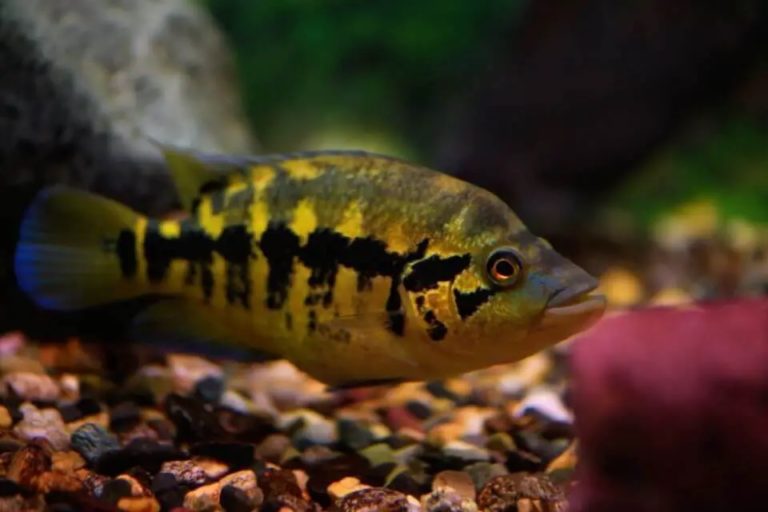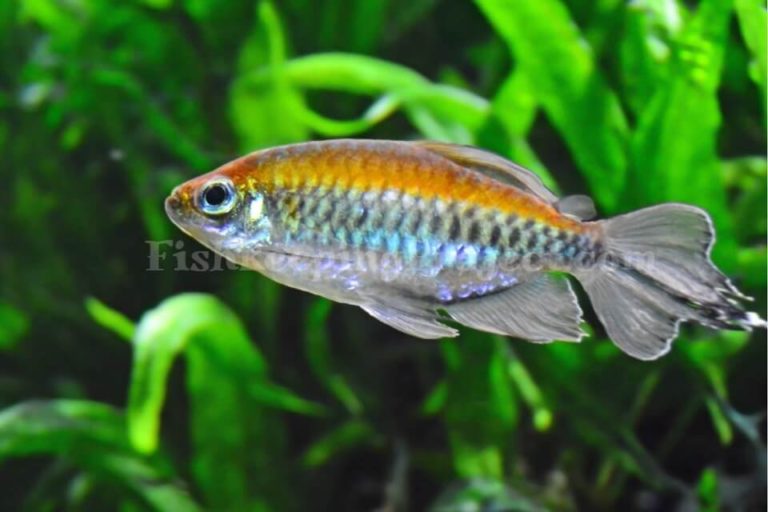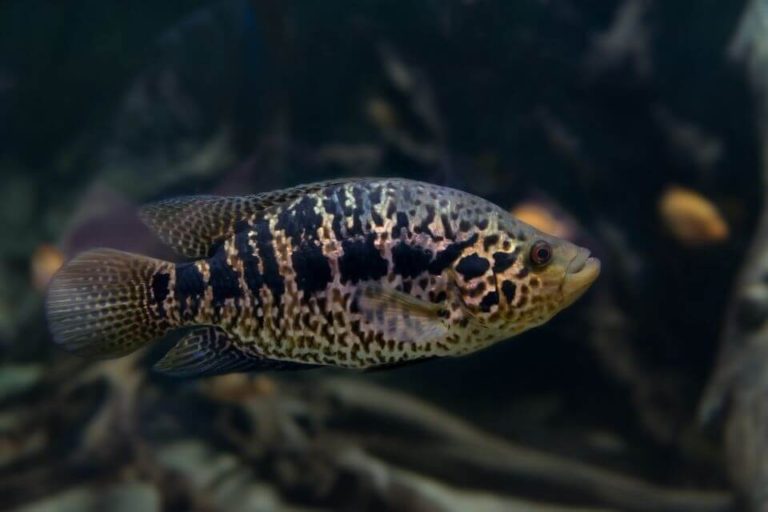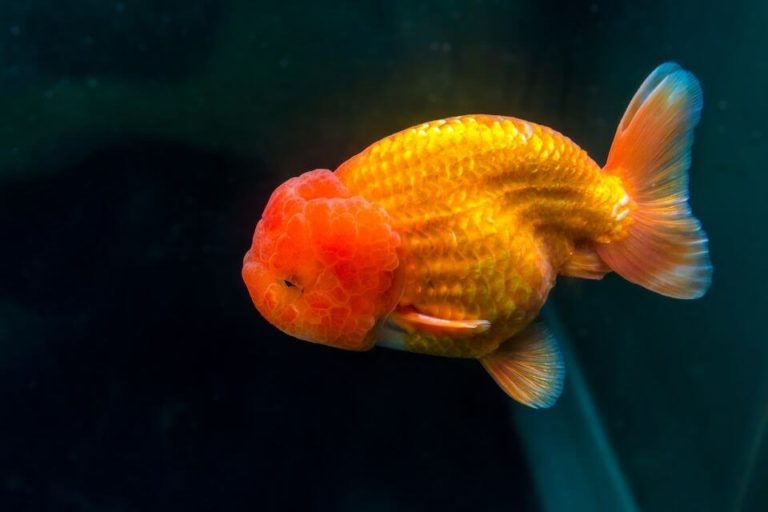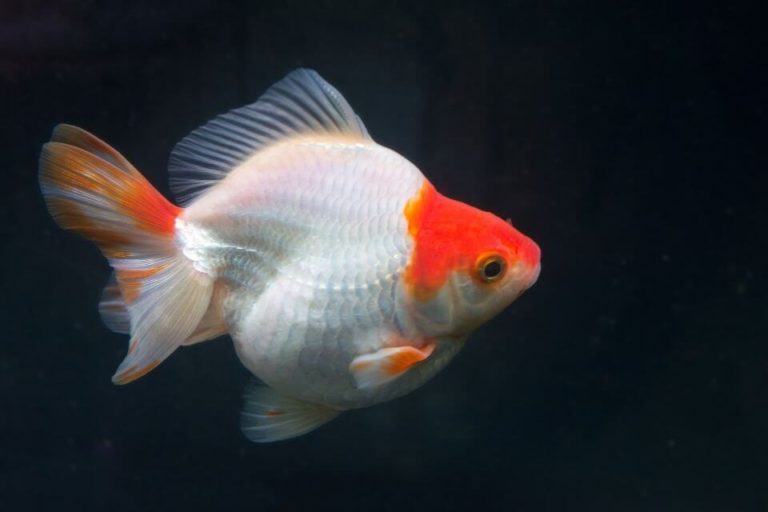Red Claw Crab Care and Species Profile: Food, Tank Mates & Tank Setup
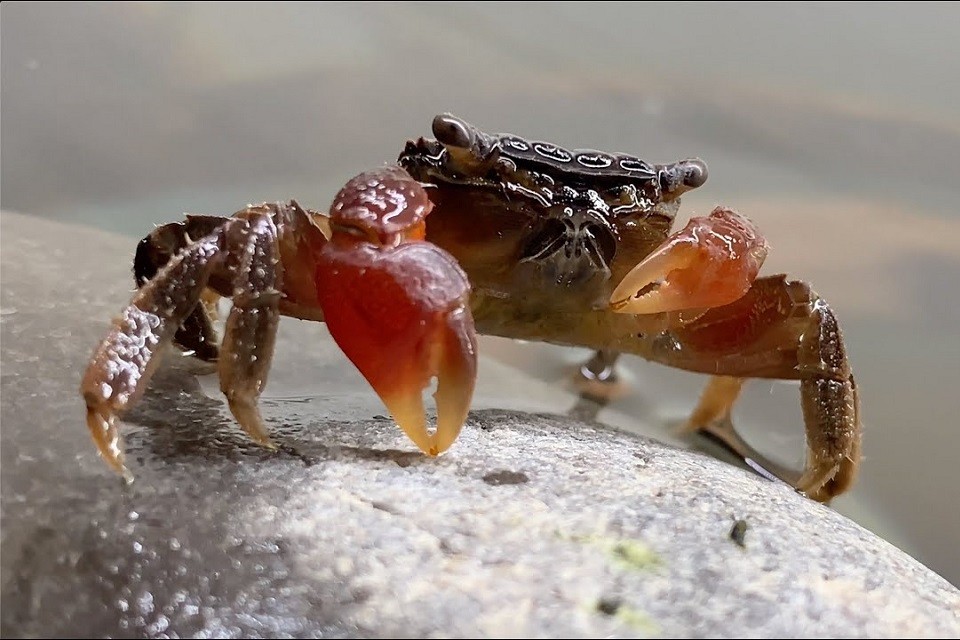
You must know that the Red Claw Crab or Red Clawed Crab is an exciting Crab species that you can keep in a freshwater or brackish water tank or a Paludarium.
If you have an aquarium, you might want to add some vibrant color to it, and if you are new, then getting some Freshwater Crabs might be a perfect idea for you.
They have maximum activity level and feature stunning colors. Bear in mind that they have maximum potential to keep you occupied the entire day. Their aggressive tendency requires you to know more about them before you proceed to rear them.
Therefore, this article will tell you more about all you need to know about Red Claw Crab Care.
| Quick Facts: | |
|---|---|
| Common Names : | Red Claw Crab, Red-Clawed Crab |
| Origin : | Indo-Pacific region |
| Family : | Sesarmidae |
| Scientific Name : | Perisesarma bidens |
| Care Level : | Moderate |
| Temperament : | Aggressive |
| Social : | Territorial |
| Diet : | Omnivores |
| Size (average) : | 2 - 2.5 inches |
| Lifespan : | Upto 2.5 years |
| Breeding : | Egg layer |
| Minimum Tank Size: | 10 gallons |
| Tank Environment : | Freshwater or Brackish water, Sand substrate, Driftwood, rocks, and silk plants |
| Temperature : | 79 – 88 °F (20 – 30 °C) |
| Water Hardness : | 8 - 25 dGH |
| Water pH Level : | 7.5 - 8.5 |
Species Overview
Red Claw Crab is sometimes called Red-Clawed Crab and is scientifically known as Perisesarma bidens. It is a crustacean species from the Sesarmidae fish family, primarily situated in the Indo-Pacific region ranging from Zanzibar, Japan, to Fiji, more so in mangrove swamps.
Most people mistake this species with Freshwater Crabs, but they can survive in freshwater while they excellently in brackish water.
You must understand that the Red Claws Crab usually live in tropical and shallow waters, which feature beds with fine sand. These areas usually have tropical temperatures.
These species are compact and incorporate a vibrant color, making them more marketable in the aquarium pet trade. They grow up to 2.5 inches, and they are pretty small compared to numerous aquarium crab species.
On the other hand, you can easily differentiate male from female Crabs by observing the red claws, which are bigger in males, and their underside shell is pointier while the females are rounder.
In a captivity environment, the Red Claw Crab lifespan is approximately between 2 to 2.5 years when it is well cared for.
Red Claw Crab Size
They will reach a maximum of 2.5 inches in a captivity environment, but they might have a bit bigger than this in the wild. These measurements have been measured without a leg span.
It will be bout around 4 inches wide when is measured with a legs span. Red Claw Crab size will depend on the care that they receive when you keep them in a tank.
Red Claw Crab Lifespan
The average Red Claw Crab lifespan is between 2 and 2 ½ years. Besides, this is only possible if you offer them the best environment to reside in. They are sensitive to water conditions like any other aquatic animal.
Most individuals consider them as unique critters, and they offer them sufficient care. In most cases, they are advertised as Freshwater Crabs, but that is not the truth because these crustacean species require brackish water and air to thrive and reach their lifespan truly.
If you keep them in Freshwater, you will shorten their lifespan, and they can only last for very few months. This also applies to crabs that are not able to find fresh air.
Therefore, as much as you do everything right for your Red Claw Crab, you must maintain the optimum water condition to maintain their health.
Moreover, inferior conditions can cause your Crab to have a shorter life expectancy, diseases, and undue stress.
Appearance, Colors, And Special Markings
This crustacean species is stunning and has excellent features. However, just like many specimens, their body tends to be relatively neutral. It has a brown body with spots to enable it to camouflage easily.
If you are keen enough, you will likely notice some large dark black patches on its head.

When you concentrate on its head, especially on the corners, it has antennae-like eyes bulging. In addition, it has ten legs, and the first eight are responsible for walking in sandy environs.
These legs are usually pointed with a similar pattern to the rest of its body. You can easily identify the Red Claw Crab by their claws. Its claws are bright red, but the tips feature a yellow or even orange color.
You must understand that color and brightness are different from one Crab to another, but all of them feature vivid red claws. If you are keen, you will notice some subtle differences between the female and male Crabs.
Furthermore, males incorporate meatier claws and are more vivid when it comes to their coloration. It is very easy to distinguish between females and males by observing underneath their bodies; they also have a compact flap.
However, for the male, the flap is pointy or triangular, while for females, it is round and broad.
Red Claw Crab Behavior & Temperament
They are perfect climbers and have maximum potential to run underwater surfaces faster. As a result, the Red Claw Crabs can escape from their potential enemies at any given time without any struggle.
Additionally, they are very aggressive creatures and cannot stand other species from reaching them. However, during mating seasons, the male species are likely to attack each other because of being territorial.
Red Claw Crabs are defensive, and they use their claws and pincers to pinch their enemies strongly. Even though they are aquatic species, they also require air, making them crawl up to maximum surfaces above the water line for breathing purposes.
Bear in mind that this is also achievable in the aquarium setup.
You must know that Red Claw Crabs hunt actively, and they are not strong carnivores. Likewise, they generate tight-fitting and small caves, underwood logs, and submerged rocks.
This is where they can take refuge quickly if threatened. During molting, they usually stay burrowed for several days.
Red Claw Crab Care and Habitat
The Red Claw Crab care and habitat engulf almost everything you require to know about these species. Red Claw Crabs care is not that hard, but several aquarium stores and websites mislead people about caring about these species.
To care for these crabs, you have to ensure that you get the appropriate tank size, set it up effectively, check on the water condition, food, and suitable plants. Furthermore, you need to watch out for diseases and how to prevent them.
– Red Claw Crab Tank Size
These Crabs have a diameter between 3 to 4 inches. In addition, they usually grow quickly and die when they are still very young.
Those considered short life and can only manage to stay for 2 or 2 ½ years. Without explaining much, these species do not require too much space.
An aquarium of 10 gallons can shelter a few Red Claw Crabs, but a 20 gallons aquarium can do an excellent job.
A size of 30 inches long, 12 inches wide, and 12 inches height guarantees you a lot of space for both land portion and water without making you feel that it is too crowded.
The size of your aquarium should be able to hold your Red Claws Crabs without any crowding, and this is essential for molting Crabs.
If you are into larger Paludarium design, large aquariums can work efficiently for you. Large aquariums generate a lot of space for decorations, such as driftwood and mangrove roots necessary for you Crabs to crawl across and up.
On the other hand, if you want to mix them with other aquatic Crabs, such as Thai Devil and Fiddler Crabs, consider a 30 gallons aquarium.

– Red Claw Crab Tank Setup
Coming up with a tank setup for your Red Claw Crab can be pretty unique and fun. However, to make these species stay admirable and healthy, you need to provide them with water and land.
Therefore, please keep a ratio of 3: 1 for water to land, suitable for these species. With this, you will notice that the Red Claw Crab habitat is specifically water with a bit of land for your Crab to relax on.
In your tank setup, you need to commence by applying the sand substrate. Red Claw Crabs love sand because it allows them to burrow, dig and scavenge. Additionally, it is an easy and safe material for these species to maneuver.
In case you are using a standard aquarium, you can establish a landmass with sand.
Fortunately, you can also find Paludariums with in-built shelves; this makes it easier for you to generate sandy landmasses. However, you can utilize the floating perches as an alternative.
Your water should feature several natural decorations, like rocks and driftwood. These decorations are vital because your Crabs will use them whenever they feel scared and threatened. They are also crucial when the Crabs molt.
Similarly, you also require a robust filtration system. You can opt for the marine filtration system; it cycles water properly without interfering with salinity levels; apart from having a filter ensure that you change 10% of your water weekly to maintain the water levels in shape.
Finally, they do not need much lighting, but LED lighting can enable the plants in the aquarium to grow efficiently.
– Water Conditions and Parameters
These species can survive in freshwater, but their lifespan will be shorter. In addition, the Red Claw Crabs usually survive 100% in Brackish water. This is a combination of freshwater as well as marine salt.
You can also achieve this in your aquarium by blending water and salt by mixing marine salt with 1 to 2 tablespoons in each gallon of freshwater.
Ideally, it is good to mix salt into a bucket of water before you pour it into your aquarium. However, ensure that you do not pour salt directly into your freshwater with your Crabs inside. It might cause health problems and even death.
Your water should have a temperature of 70 to 88 degrees Fahrenheit (21 to 31 Celsius) and a pH of 7.5 – 8.5. You need to maintain water hardness between 8 to 25 dGH.
– Suitable Plants
Plants are excellent and can enhance the look of your aquarium, but you need to understand that Red Claw Crabs are good at uprooting as well as shredding plant leaves. With their claw, they can confidently slice your plants.
Therefore, you can opt to use silk plants instead of living plants.
– Possible Diseases and Prevention
Red Claw Crabs are very resilient to diseases. In most cases, they usually feast on diseased and sick fish without experiencing any problem.
Similarly, they can experience a parasitic infestation, fungal as well as bacterial infections. Fortunately, such conditions rarely occur. On the other hand, stress and overcrowding have significantly increased their chances of getting sick.
To prevent this, ensure that these crabs are always comfortable. In addition, change the water regularly and monitor your aquarium water conditions to prevent them from illness.
Origin, Distribution, And Availability
Bear in mind that this species originated from the Indo-Pacific region; this is between Zanzibar to Japan as well as Fiji Island. It spread to the South China sea, specifically from Hong Kong up to Singapore.
Furthermore, these arthropods’ regional subspecies are yet to be defined by scientists.
They have been populated as an aquarium pet species amount aquarium space. Red Claw Crab are commercially bred and made available worldwide.
You might be able to find Red Claw Crab for sale in your local breeding facilities or pet stores at reasonable prices as well as online.
Red Claw Crab Food and Feeding
These species usually hunt for their food because they are not strong carnivores. However, many individuals consider them opportunistic omnivores since they consume almost every food, such as bloodworms, brine shrimp, fish flakes, and shrimp pellets.
Likewise, it feeds on balanced vegetables, like peas, spinach, among many leafy greens.
It can also feed on commercial crab food, small pieces of uncooked fish, and algae pellets. Red Claw Crabs usually require an excellent diet consisting of a lot of vegetables and proteins.
You can use live baits when feeding them to encourage exercise and as a way of treating them.
Red Claw Crab Tank Mates
Red Claw Crabs are usually not social since they are likely to cannibalize when stored in captivity. Therefore, before you think of putting tank mates in your Red Claw Crab aquarium, you need to consider these things.
The male species should not be stored together since they can grow aggressive toward each other.
Besides, they can fight because of the territory, and the outcome can be very deadly. It is possible to keep many females with one male in your tank.
When looking for suitable tank mates, it is appropriate that you get first swimming fish, which can live upper your water levels.
A few possible tank mates would be:
- Mollies
- Guppies
- Neon Tetras
However, when they become sick, the Red Claw Crabs will feast on them.

Red Claw Crab Molting Process
The molting stages of these species require you to feature numerous hiding places in your aquarium. Crabs feature an outer shell that does as part of their growth. Therefore, to grow systematically, they shed these shells in a molting process.
It takes a few weeks to finish the entire molting process and requires a cozy hiding place.
Before molting, it absorbs water one day earlier. This enhances the expansion of the shell for easy molting. Then, when it is due, the carapace opens, the Crab compresses and pushes its entire appendages to eliminate the rest of the old shell.
Bear in mind that this process takes utmost 15 minutes. After this, it takes a few weeks to retract its entire body parts from its outer shell gradually. Then, underneath the older shell, it secretes the new one.
When it is through with the molting process, it will feature a lot of water, making them vulnerable to predators, and they become very soft.
Red Claw Crab Breeding
It is difficult to find the Red Claw Crab breeding in the aquarium. First, you must know that Red Claw Crabs commence their lives as larvae and the chances of surviving in the tank are usually low, and sometimes there are no chances of it surviving.
The females usually carry eggs, but the eggs might not hatch. Thus, the Red Claw Crab breeding is much possible only in their natural habitat.
Difference Between a Male and Female Red Claw Crab
Their claws can tell the difference between the male and female Red Claw Crab because the male Red Claw Crab has larger claws, unlike the female counterparts. As a result, males are brighter in color than females.
Furthermore, the underside of the male is pointier, while the female underside is rounder.
How Many Babies Do Red Claw Crabs Have?
Females brood their eggs for 6 to 10 weeks, but this depends on the temperature. They usually produce 300 to 800 eggs per brood. Therefore, during the breeding season, the Red Claw has 3 to 5 broods.
Are Red Claw Crabs Hardy?
Yes, Red Claw Crabs are hardy because they reside in a mixture of salt and freshwater.
How Long Can Red Claw Crabs Stay Underwater?
These species are genuinely aquatic, and they can stay in the water as long as they want. They spend 50% of their time inland. They can stay underwater as long as their gills remain and stay moist.
Are Red Claw Crabs Aggressive?
Red Claw Crabs are very aggressive. They are considered territorial creatures since they fight for their space. Besides, when they shed their shells during their growth, they are usually vulnerable to attacks.
How Many Are Red Claw Crabs in a 10 Gallon?
A 10 gallon can hold three crabs, and it will feature water and land.
How Many Should Red Claw Crabs Be Kept Together?
You only need to keep a minimal number of these species in your aquarium. However, please do not put the male ones together because they can get in a fight. At least keep two females and one male in your tank making them altogether 3 in a tank.
Where Can We Find Red Claw Crab for Sale?
The Red Claw Crabs are usually found in the local fish store and breeding facilities. However, you can also opt to get them online and for those who complain about not finding Red Claw Crab for sale in their nearest aquarium store.
It is appropriate that you choose to shop online instead of going through a lot of hassle.
Now You Can Decide
This detailed post has made you more knowledgeable about the Red Claw Crab, how you can care for it and what it entails. With sufficient care, you can have these species for quite a long time.
Therefore, make up your mind today and opt for these creatures. They will give you an outstanding experience since they are already fun to have in your aquarium.


